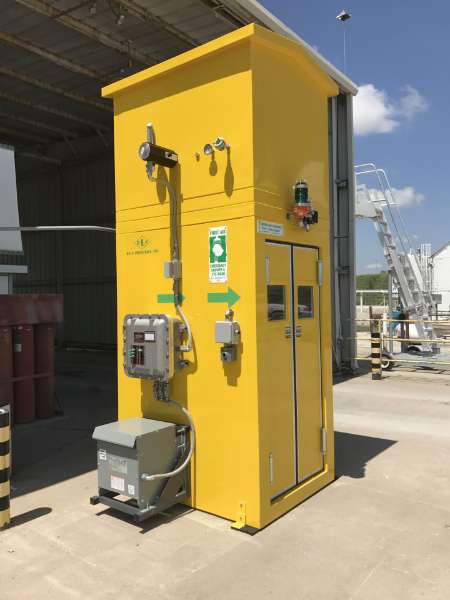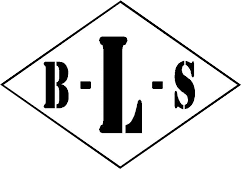Safety Shower and Eyewash Station Requirements: What You Need to Stay Compliant in 2025

Workplace safety has always been a top priority in industries where hazardous chemicals, corrosives, or particulate matter are present. One of the most critical safeguards for employee protection is the safety shower and eyewash station. These emergency fixtures provide immediate first aid to workers exposed to harmful substances, minimizing injuries and often preventing long-term damage.
As we move into 2025, compliance standards continue to evolve, and businesses must remain vigilant to ensure their safety equipment is up to code.
Why Safety Showers and Eyewash Stations Are Critical
In hazardous work environments such as laboratories, manufacturing plants, oil refineries, and chemical processing facilities, even a few seconds of delayed treatment can mean the difference between recovery and permanent injury.
- Rapid Response: Safety showers and eyewash stations provide immediate decontamination, flushing harmful substances from the eyes, skin, and clothing.
- Regulatory Compliance: Standards set by OSHA (Occupational Safety and Health Administration) and ANSI (American National Standards Institute) require these units in facilities where hazardous materials are handled.
- Employee Confidence: Workers who know proper safety equipment is available are more confident and productive in their roles.
The importance of these systems goes beyond compliance—they are a lifeline in emergency scenarios.
The Current Standards: OSHA and ANSI Z358.1-2014
When discussing safety showers and eyewash station requirements, two primary governing bodies set the bar:
- OSHA (29 CFR 1910.151(c))
OSHA mandates that suitable emergency eyewash and shower equipment must be “provided within the work area for immediate emergency use” where workers may be exposed to harmful corrosive materials. - ANSI/ISEA Z358.1-2014 Standard
While not law, ANSI standards are widely recognized and enforced through OSHA citations. This standard outlines design, performance, installation, testing, and maintenance requirements for safety showers, eyewash stations, and combination units.
Together, OSHA and ANSI form the foundation for what facilities must implement to remain compliant.
Key Compliance Requirements in 2025
Although ANSI Z358.1 has not been updated since 2014, regulators have increasingly emphasized enforcement and testing. To stay compliant in 2025, facilities should focus on the following:
1. Accessibility and Location
- Units must be within 10 seconds (roughly 55 feet) of a hazard.
- The path to the station must be free from obstacles, barriers, or locked doors.
- Stations must be located on the same level as the hazard, with no stairs in between.
2. Activation and Flow
- Equipment must activate in one second or less.
- Hands-free operation is required once activated.
- Eyewash units must deliver a controlled flow to both eyes simultaneously.
- Safety showers must provide 20 gallons per minute for 15 minutes.
3. Water Temperature
- Tepid water is mandatory: 60–100°F (16–38°C).
- In 2025, enforcement around tepid water delivery is stricter, as cold or hot extremes can worsen injuries or deter proper flushing.
- Heated enclosures are strongly recommended in colder climates to prevent freezing.
4. Duration of Flow
- Stations must deliver flushing fluid for a minimum of 15 minutes.
- This ensures full decontamination of chemicals that might otherwise remain on the skin or in the eyes.
5. Weekly and Annual Testing
- Weekly activation ensures flushing fluid is available and clears out sediment or microbial buildup.
- Annual inspections verify compliance with ANSI performance requirements.
- Documentation of testing is essential to pass regulatory audits.
Types of Safety Showers and Eyewash Stations
Not all facilities have the same hazards, which is why multiple types of units are available. Understanding the right solution for your environment is critical.
1. Plumbed Eyewash Stations
- Permanently connected to a water supply.
- Deliver a continuous, reliable flow of flushing fluid.
- Ideal for laboratories, manufacturing plants, and long-term installations.
2. Self-Contained (Portable) Eyewash Units
- Filled with a finite amount of flushing fluid.
- Best for remote areas or locations without plumbing access.
- Require regular refilling and sanitization.
3. Safety Showers
- Full-body drenching units for large-scale exposure.
- Installed in areas where corrosive chemicals or flammable liquids are present.
- Must meet flow and temperature requirements.
4. Combination Units
- Incorporate both a safety shower and eyewash in one fixture.
- Convenient for areas with multiple exposure risks.
- Must be designed so both can operate simultaneously without losing pressure.
5. Heated Enclosures and Freeze-Protected Units
- Protect against freezing conditions that could disable equipment.
- Ensure tepid water delivery even in harsh climates.
- Common in outdoor facilities, oil and gas sites, or northern regions.
Industry-Specific Requirements
Different industries face unique hazards, which influence equipment selection and placement.
- Chemical Manufacturing: Requires multiple combination units in process areas.
- Healthcare and Labs: Must meet strict contamination control standards; plumbed eyewashes are common.
- Food & Beverage Processing: Must avoid contamination while still ensuring protection; stainless steel construction is preferred.
- Oil & Gas: Outdoor conditions demand heated, freeze-protected units.
- Mining: Rugged, durable equipment capable of withstanding harsh environments.
Common Compliance Mistakes to Avoid
Even well-equipped facilities sometimes fall short of compliance. Here are frequent mistakes seen in OSHA inspections:
- Installing stations too far from the hazard.
- Failing to provide tepid water.
- Not testing equipment weekly.
- Allowing clutter or barriers to block access.
- Using outdated equipment that doesn’t meet ANSI flow or pressure requirements.
- Neglecting training—employees must know how and when to use the stations.
Training and Education: A Critical Piece of Compliance
Providing equipment is only part of the solution. Employees must be trained to respond effectively during emergencies. Training should include:
- Location Awareness: Workers must know the nearest unit’s location.
- Demonstration of Use: Hands-on training ensures familiarity.
- Emergency Protocols: Workers should understand when to use showers versus eyewashes.
- Refresher Courses: Conduct annually to reinforce compliance and preparedness.
Preparing for OSHA Inspections in 2025
OSHA inspections can happen unannounced, and safety showers and eyewash stations are often among the first things inspectors check. To prepare:
- Document Weekly and Annual Testing.
- Verify Accessibility: Ensure nothing blocks access to units.
- Confirm Water Temperature: Install thermostatic mixing valves.
- Update Signage and Lighting: Stations must be clearly marked and visible.
- Replace Outdated Equipment: Units installed before ANSI Z358.1-2014 may not meet today’s standards.
Proactive compliance not only avoids costly fines but also reinforces a culture of safety.
Looking Ahead: The Future of Compliance
While the ANSI Z358.1-2014 standard remains in effect, experts anticipate revisions within the next few years as technology evolves. Future trends may include:
- Smart Safety Equipment: Internet-connected monitoring systems that track flow, temperature, and testing.
- Sustainability Considerations: More efficient water use without sacrificing compliance.
- Enhanced Ergonomics: Easier-to-use designs for workers with limited mobility.
Staying ahead of these trends ensures long-term compliance and employee protection.
Partnering with a Trusted Provider
Selecting the right safety shower and eyewash station is not a one-size-fits-all decision. Facilities must consider hazards, climate, water supply, and long-term maintenance. Working with an experienced partner helps you navigate these decisions with confidence.
That’s where B-L-S Industries, Inc. comes in. Since 1976, we’ve been committed to providing reliable, compliant, and durable safety solutions from our headquarters in Carl Junction, MO. Whether you need a standard eyewash station, a custom-designed system, or a heated shower enclosure, we have the products and expertise to meet your unique needs.
Stay Compliant, Stay Safe
Compliance with safety shower and eyewash station requirements is about more than meeting regulations—it’s about protecting your employees in moments that matter most. As 2025 brings increased scrutiny and higher expectations, businesses that invest in the right equipment and training will safeguard both their people and their reputation.
At B-L-S Industries, Inc., we’re proud to be your trusted partner in workplace safety. With over four decades of experience, we understand the engineering challenges you face and offer solutions designed for durability, reliability, and compliance.
Don’t leave your safety to chance. Explore our full range of emergency showers and eyewash stations. Let’s work together to build a safer, compliant workplace for 2025 and beyond.
